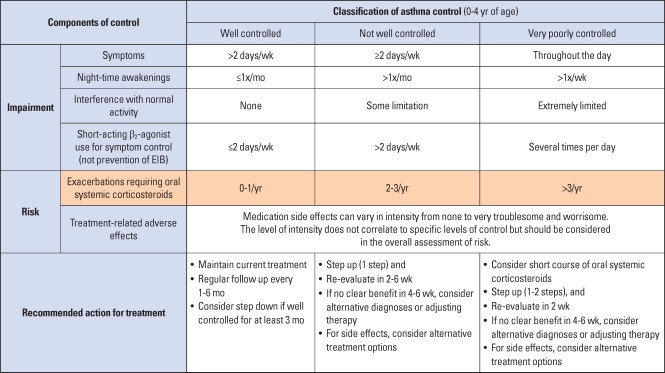Fig. 3.
Assessing asthma control and adjusting therapy in children 0-4 yr of age.
EIB, exercise-induced bronchospasm.
• The stepwise approach is meant to assist, not replace, the clinical decision making required to meet individual patient needs.
• The level of control is based on the most severe impairment or risk category. Assess impairment domain by caregiver's recall of previous 2-4 wk. Symptom assessment for longer periods should reflect a global assessment such as inquiring whether the patient's asthma is better or worse since the last visit.
• At present, there are inadequate data to correspond frequencies of exacerbations with different levels of asthma control. In general, more frequent and intense exacerbations (e.g., requiring urgent, unscheduled care, hospitalization, or ICU admission) indicate poorer disease control. For treatment purposes, patients who had ≥2 exacerbations requiring oral systemic corticosteroids in the past year may be considered the same as patients who have not-well-controlled asthma, even in the absence of impairment levels consistent with not-well-controlled asthma.
• Before step up in therapy: Review adherence to medications, inhaler technique, and environmental control. If alternative treatment option was used in a step, discontinue it and use preferred treatment for that step.

